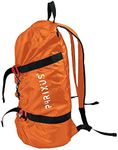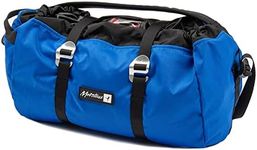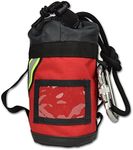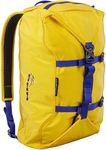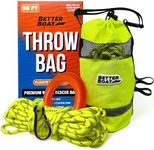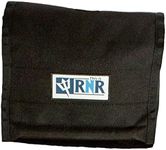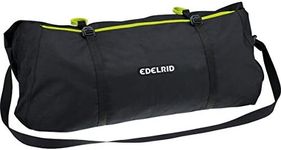Buying Guide for the Best Rope Bags
Choosing the right rope bag is essential for climbers, cavers, and anyone who needs to transport and protect their ropes. A good rope bag will keep your rope clean, organized, and tangle-free, while also making it easier to carry. When selecting a rope bag, consider the following key specifications to ensure you get the best fit for your needs.CapacityCapacity refers to the amount of rope and other gear a bag can hold, usually measured in liters or meters of rope. This is important because you need a bag that can comfortably fit your rope without being too bulky or too tight. Smaller bags (20-30 liters) are suitable for shorter ropes (up to 60 meters) and minimal gear, while larger bags (40-50 liters) can accommodate longer ropes (up to 80 meters) and additional equipment. Choose a capacity based on the length of your rope and the amount of gear you typically carry.
MaterialThe material of the rope bag affects its durability, weight, and water resistance. Common materials include nylon, polyester, and canvas. Nylon and polyester are lightweight, durable, and often water-resistant, making them ideal for most climbing conditions. Canvas is heavier but extremely durable and can withstand rough handling. If you frequently climb in wet or abrasive environments, opt for a bag made from a more durable and water-resistant material.
Carrying SystemThe carrying system of a rope bag includes the straps and handles that allow you to transport it. This is important for comfort and convenience, especially on long approaches. Basic rope bags may have simple shoulder straps, while more advanced models feature padded backpack-style straps and additional handles. If you often hike long distances to your climbing spots, look for a bag with comfortable, adjustable, and padded straps to distribute the weight evenly and reduce strain on your shoulders and back.
Closure SystemThe closure system of a rope bag determines how easy it is to access and secure your rope. Common closure types include drawstrings, zippers, and buckles. Drawstrings are quick and easy to use but may not provide the most secure closure. Zippers offer a more secure closure but can be prone to jamming or breaking. Buckles provide a secure and adjustable closure but can be slightly more cumbersome to use. Choose a closure system based on your preference for ease of use and security.
Rope TarpA rope tarp is a built-in or detachable sheet that provides a clean surface to lay out your rope, protecting it from dirt and debris. This is important for maintaining the longevity and performance of your rope. Some rope bags come with an integrated tarp, while others may include a separate tarp. If you often climb in dirty or rocky areas, a rope bag with a large, durable tarp is a good choice to keep your rope clean and tangle-free.
Additional FeaturesAdditional features in a rope bag can enhance its functionality and convenience. These may include extra pockets for storing gear, loops for attaching accessories, and reinforced bottoms for added durability. While not essential, these features can make a rope bag more versatile and user-friendly. Consider what additional features might be useful for your specific climbing needs and look for a bag that includes them.



